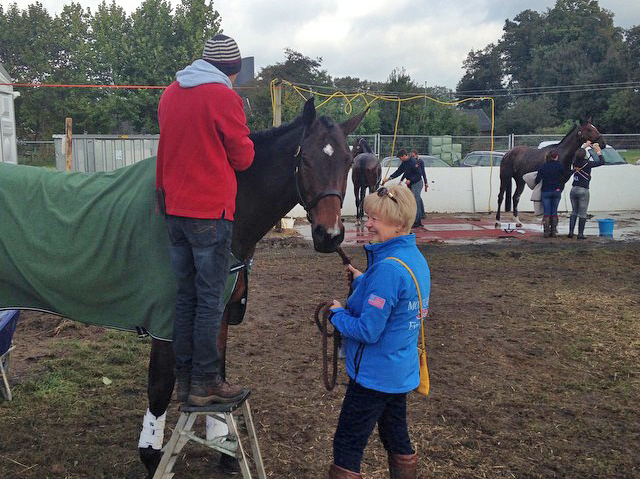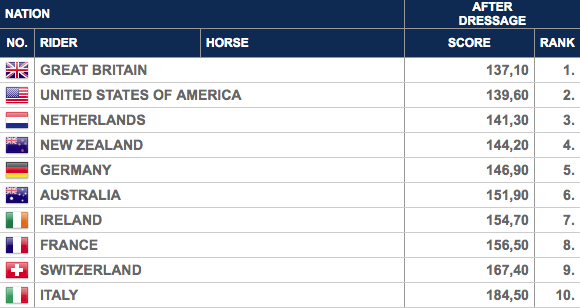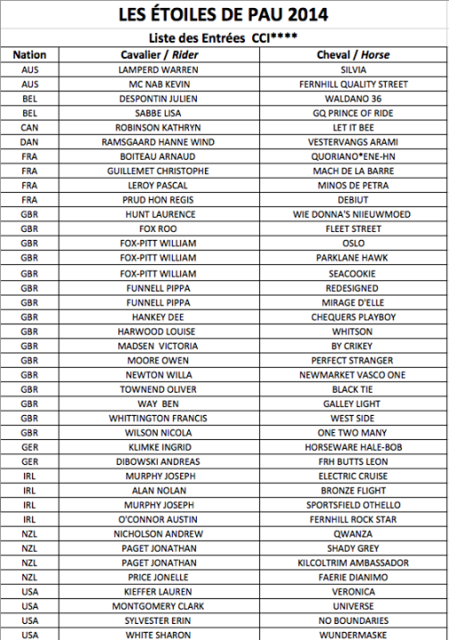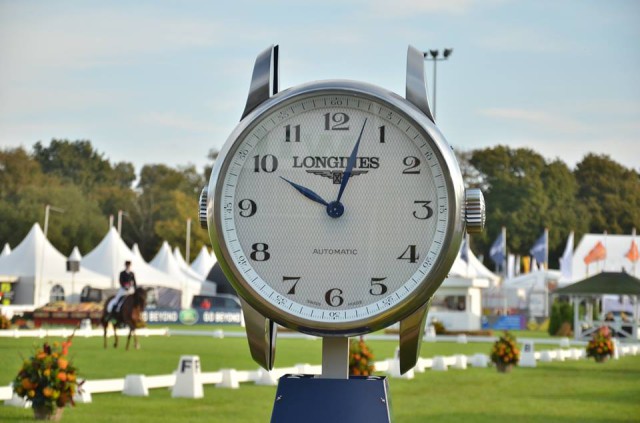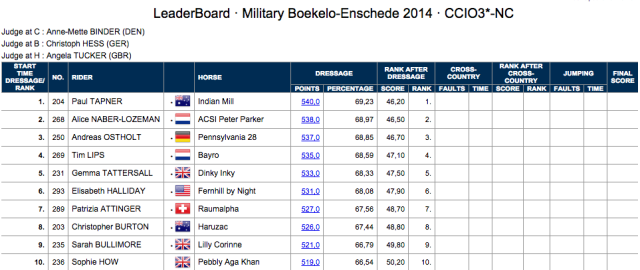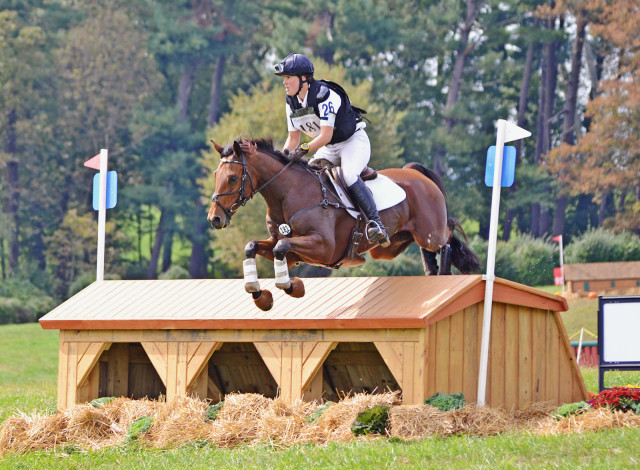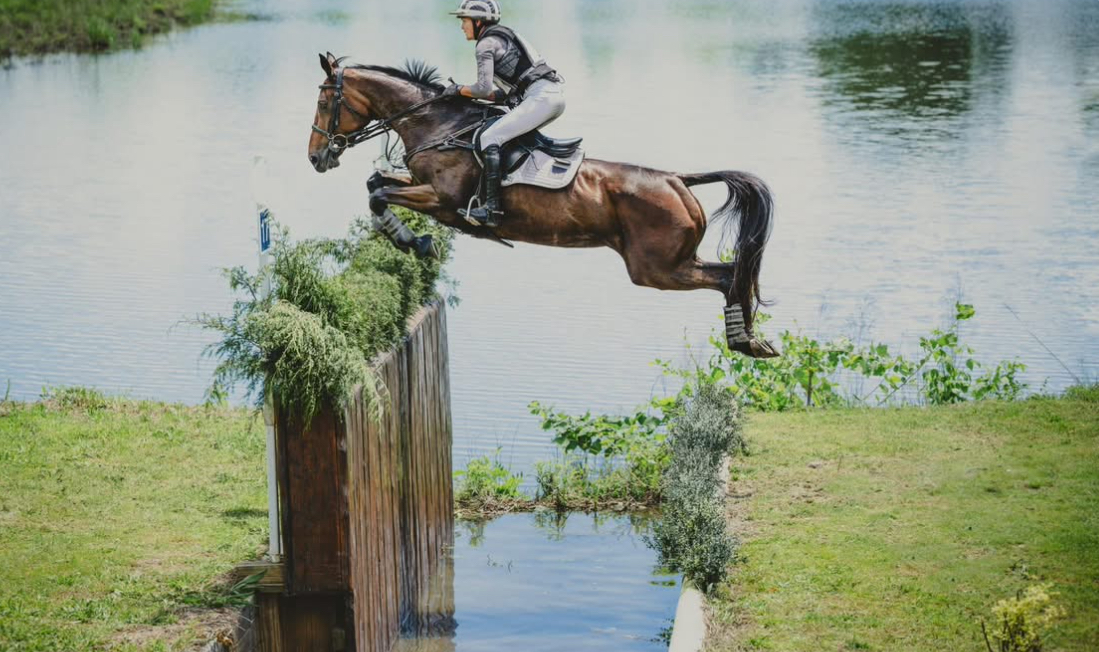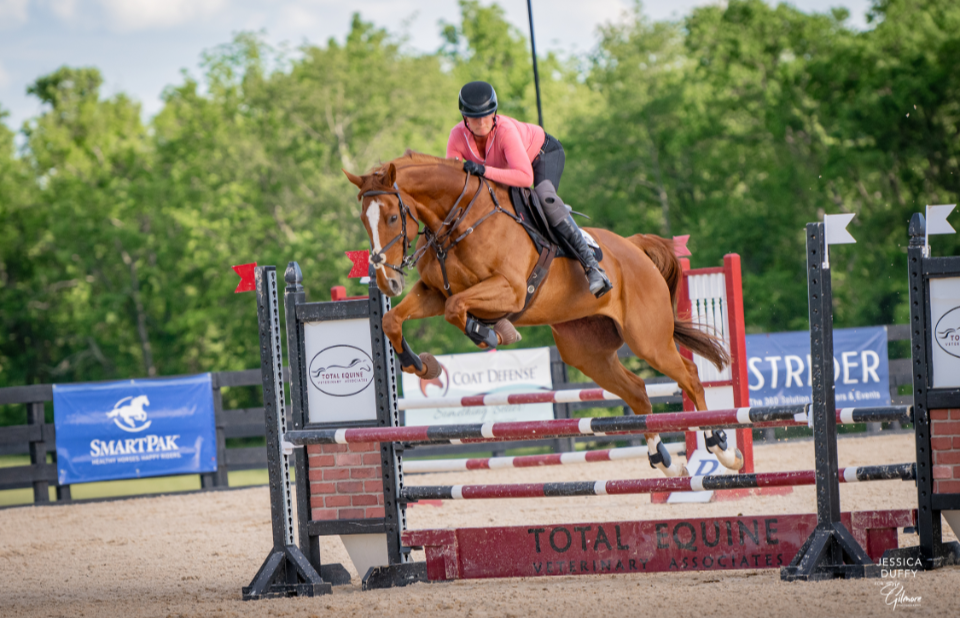Danielle Zandirad is an Area I eventer who recently took an eye-opening clinic with Marcia Kulak. Danielle is a senior at Cazenovia College, and she was eager to share the story of one of the best clinic experiences she's had to date. Thank you, Danielle, for writing, and thank you for reading!
 Marcia Kulak teaching two Cazenovia College Students in the first group
Photo courtesy of Cazenovia College Equestrian Team Facebook Page.
Marcia Kulak teaching two Cazenovia College Students in the first group
Photo courtesy of Cazenovia College Equestrian Team Facebook Page.
From Danielle:
Marcia Kulak is a top three-day event rider and trainer who has successfully competed at some of the world’s largest and most recognized competitions, including Rolex, Burghley, Blenheim, Boekelo and Fair Hill. In addition, she has also been short listed for two Olympic Games. She has trained with a wide variety of equine experts like Jack Le Goff, George Morris, Mark Phillips, Anne Kursinski, Sue Blinks, as well as natural horsemanship masters John Lyons and Louis Wood. Did I mention she is also on the USEF Eventing Selection Committee?

Marcia Kulak with Cazenovia College student Cara and Harley, one of the lovely horses she has donated to our college.
I have seen Marcia over the years at Area I competitions such as Larkin Hill Horse Trials and Millbrook Horse Trials and have always admired her riding skills and immaculate appearance of her horses, so I jumped at the opportunity to ride with her.
There were five groups and two private lessons throughout the day. Although there were a variety of groups and levels of both horses and riders, Marcia concentrated on three principles that could be applied to everyone. She called these her “mantras” of riding. These included:
1. Rhythm: This has to do with the speed and quality of the gait you’re in
2. Track: Where you are going or headed to, or the moment you sit in the tack
3. Balance: Proper position and how it influences your horse
She mentioned that these three mantras are the basic responsibilities of the rider, regardless of the discipline they ride. These universal principles can be applied to an eventing horse, a dressage horse, a show hunter or any other horse for that matter.
I rode Twister, a 13-year-old Dutch Warmblood gelding, for my lesson. The lesson was focused around the three mantras, and the exercises we performed helped to put these principles into practice. We first warmed up at the walk, trot and canter, and Marcia immediately picked up on our weaknesses. She pointed out my weary outside arm, which occasionally straightens out instead of maintaining a necessary bend, as well as my tendency to keep my hands too wide.
She would remind me throughout the lesson to correct these faults and HOW and WHY to correct them, which was very helpful. Trainers sometimes tell you to do something without explaining the proper way to go about fixing the problem, and WHY it’s a problem in the first place. Marcia excelled at this, which was one of the reasons why she was so great.
On the flat we focused on keeping the horses as straight as possible and through in their backs with a correct, relaxed position. She stressed that one should not over-flex the horse or see-saw on their mouth, which many riders mistakenly do in order to get the horse’s head down.

A set up of the ring which illustrates four cavaletti, two poles, and two jumps. Photo courtesy of Haley Bell.
After warming up on the flat, we started an exercise that involved performing a large circle, trotting down the centerline over four cavalettis and then switching directions to perform the exercise the other way. It sounds simple enough, right? Wrong! When performing the large circle, we were to be focusing on the track we were taking while executing proper geometry of the circle.
Marcia explained how maintaining a large, correct circle would help us in making the line down to the cavalettis more accurate. Marcia emphasized almost touching the wall on the circle to make sure we were using the ring to our advantage, and then to turn down the center line and make sure the horse was STRAIGHT (no over-flexion of the neck or hips pointed out) and pointed to the very center of the cavalettis.
While focusing on this straightness, we were also responsible for maintaining a set rhythm to and through the cavalettis. Some horses tend to build throughout an exercise, so our job was to maintain and demand the same pace. The first few times were rough for me. I was more concentrated the exercise as a whole and didn’t take into account the bits and pieces of it that would make the execution successful.
I made the mistake a few times of cutting my turn too soon on the way out of the circle to the cavalettis, which prevented me from attaining straightness. This resulted in a crooked horse and a chip in to a few of the poles. Once I utilized my geometry and waited to turn, things got better, and we took a short walk break.
We then carried the exercise into the canter. The idea was to pick up the canter, set a pace we were happy with, make a large circle and canter down the centerline over the cavalettis. We were to do this in alternating directions, and then after the last turn of going through the cavelettis, manage a square halt to end.
At the canter, I had to concentrate even more on maintaining the rhythm than at the trot. Twister sometimes builds after a few times of doing an exercise involving poles or jumps, so I had to focus in on picking a pace and sticking with it as well as maintaining the proper position of sitting up tall with my shoulders back and squared, sinking deep into my heels, keeping my reins short enough, and keeping my elbows equal and bent by my sides.
The first few times of performing the exercise did not go in my favor because I did not use the entire circle to set myself up for success, and once I was heading down to the cavalettis on the center line, Twister rushed forward and I did nothing to correct it. I froze!
I took a deep breath, got myself together, and after a few times I began to conquer the exercise. I shortened my reins, made use of my geometry and almost touched the walls like Marcia told us to, attained a straight approach to the cavalettis and maintained my pace to and through them. I had conquered the exercise!
By the end of my ride, there was a clear improvement and even a gain in my overall confidence. Once I started to believe in Marcia’s system and apply it in a relaxed manner, I could focus on my job at hand. Finding a steady rhythm, while utilizing my track and maintaining a proper position helped me to find my distance every time and it lessened the anxiety factor for both Twister and I.
I had my reins too long not only in the trot but also in the canter – one of my worst habits – I falsely thought that I needed to have long reins to maintain proper contact with the horse. Yet, by the end of Marcia’s lesson, through instruction and explanations, I realized that I could still follow and maintain an elastic connection with appropriately shortened reins which is something I will apply in my riding from here on out.

Twister and I through the cavaletti exercise Marcia had us do at the trot. Photo courtesy of Molly Gildea.
Something Marcia said that will stick with me for the rest of my riding career was, “Remember, your goal is to OWN the basics and practice them correctly every ride!”. We as riders sometimes forget about the basics when really, they are something that always need work.
After all, you can’t progress without a solid foundation. Sometimes that foundation needs to be checked in with once in a while!
In addition to teaching, Marcia also sat on a variety of horses throughout the day and illustrated what she was trying to get across to us on horseback. Since many people learn best through visuals, this assisted in getting her message across in an additional way. Within 5 minutes, each horse was transformed and had a clear understanding of what Marcia wanted from them.
She illustrated the clarity, proper position, and balance that she wanted us riders to demonstrate as well. Marcia got on one horse in particular in my group that the rider had trouble getting forward. She immediately asked the horse to go forward into a hand gallop in order to “get the back wheels moving”, as she put it.
After about two times around the ring she came back to the trot. The horses trot was transformed into a much more forward and fluid gate and he came together very nicely for her. She got the hind end, or “the back wheels” moving first, and everything else came together from that!
She utilized the basic principle of pressure and release of pressure when the horse does as asked instead of the constant nagging many riders do to attempt to get the horse moving forward (c’mon, we have all been guilty of that at one time or another!). Horses seek clear instructions and leadership from their riders, and that is exactly what Marcia did and instructed us to do as riders throughout the day.
Receiving the opportunity to not only watch but ride with Marcia Kulak was an experience I hope I can participate in again one day. Her style of teaching was refreshing and exciting. She was serious and direct about what she wanted you to do yet very friendly and relaxed at the same time. This is not something every trainer and top rider can do.
Additionally, a rider would only receive praise when they achieved what she wanted, which assured you were doing something right, which felt great. We were all so grateful she took the time out of her day to come teach us, and hope she comes back soon.









